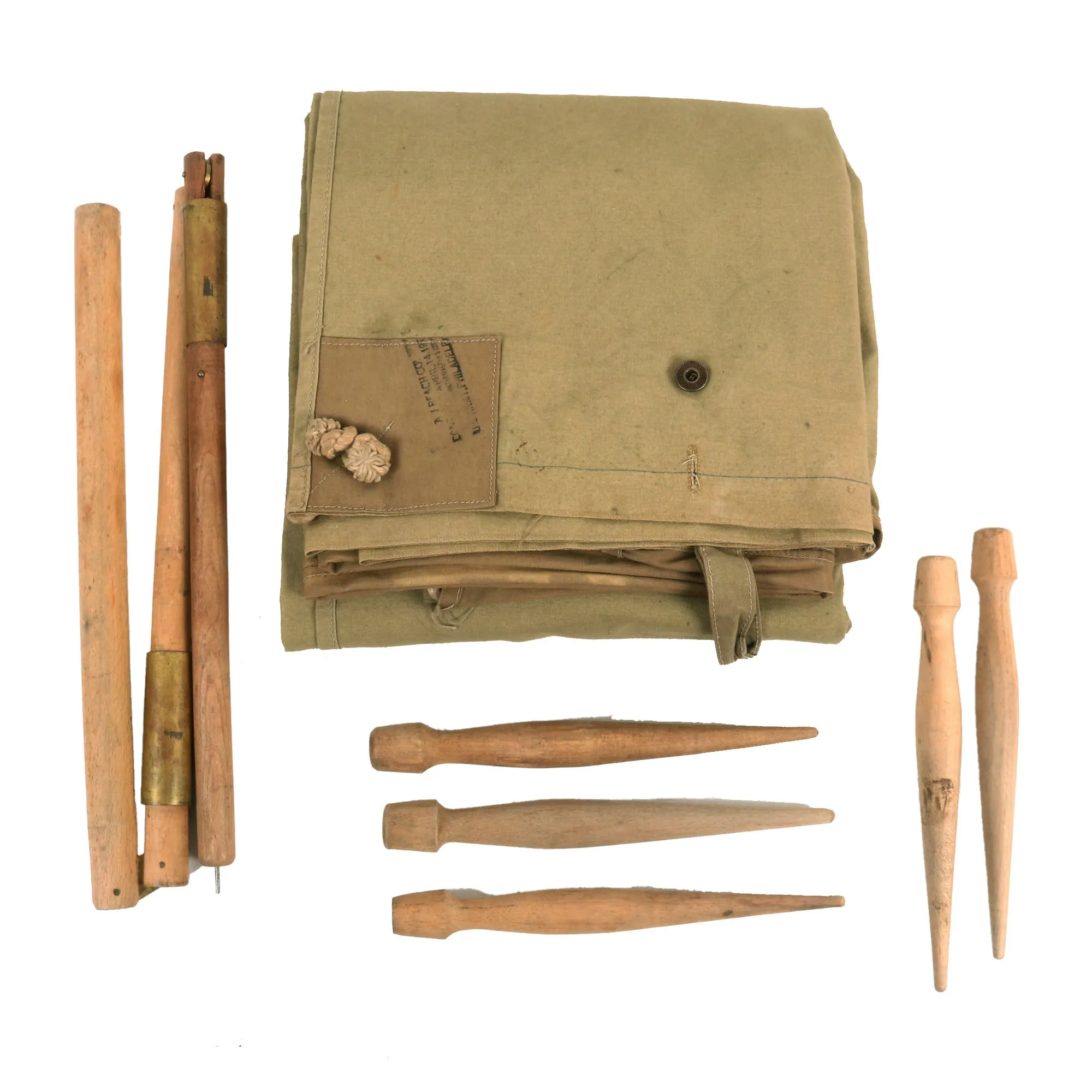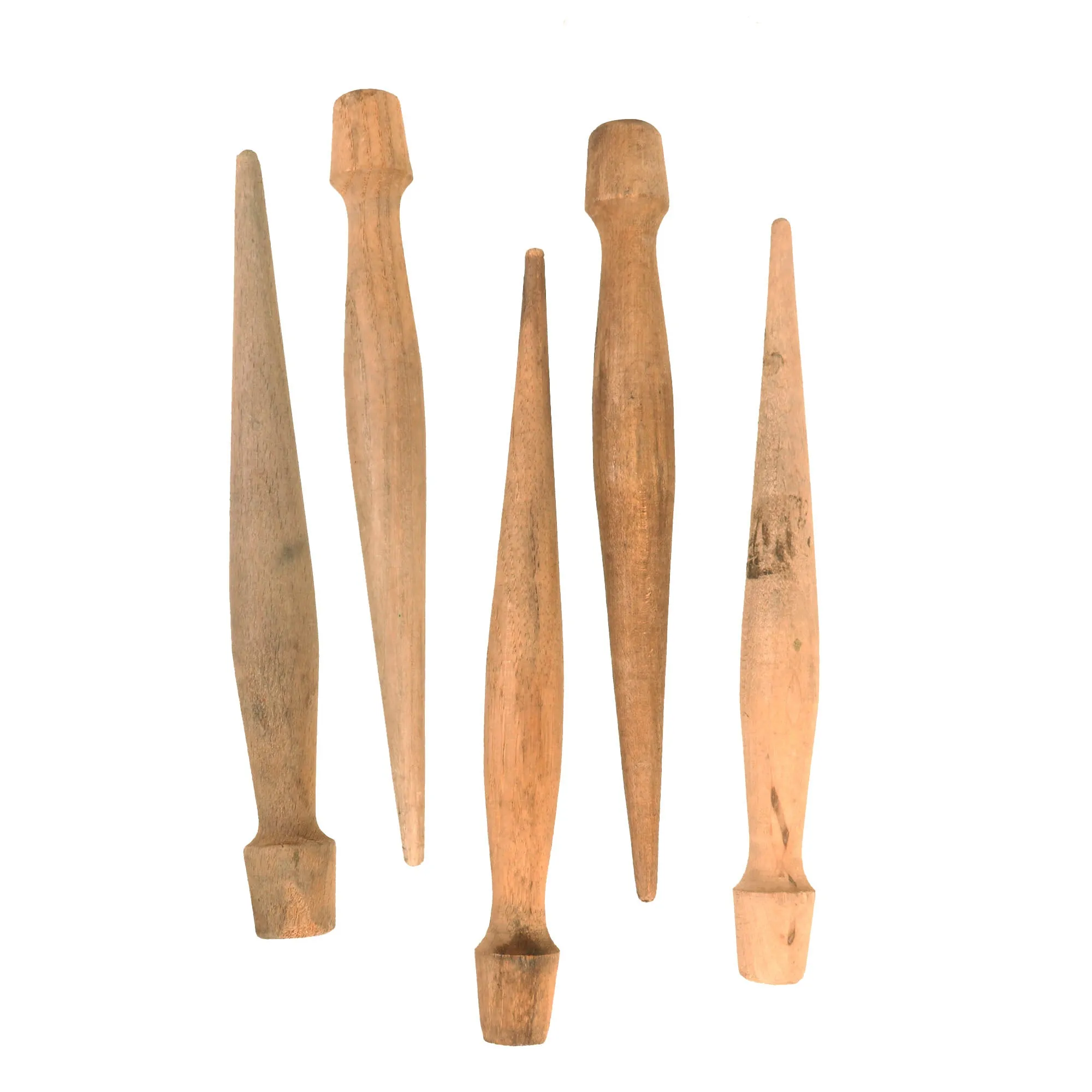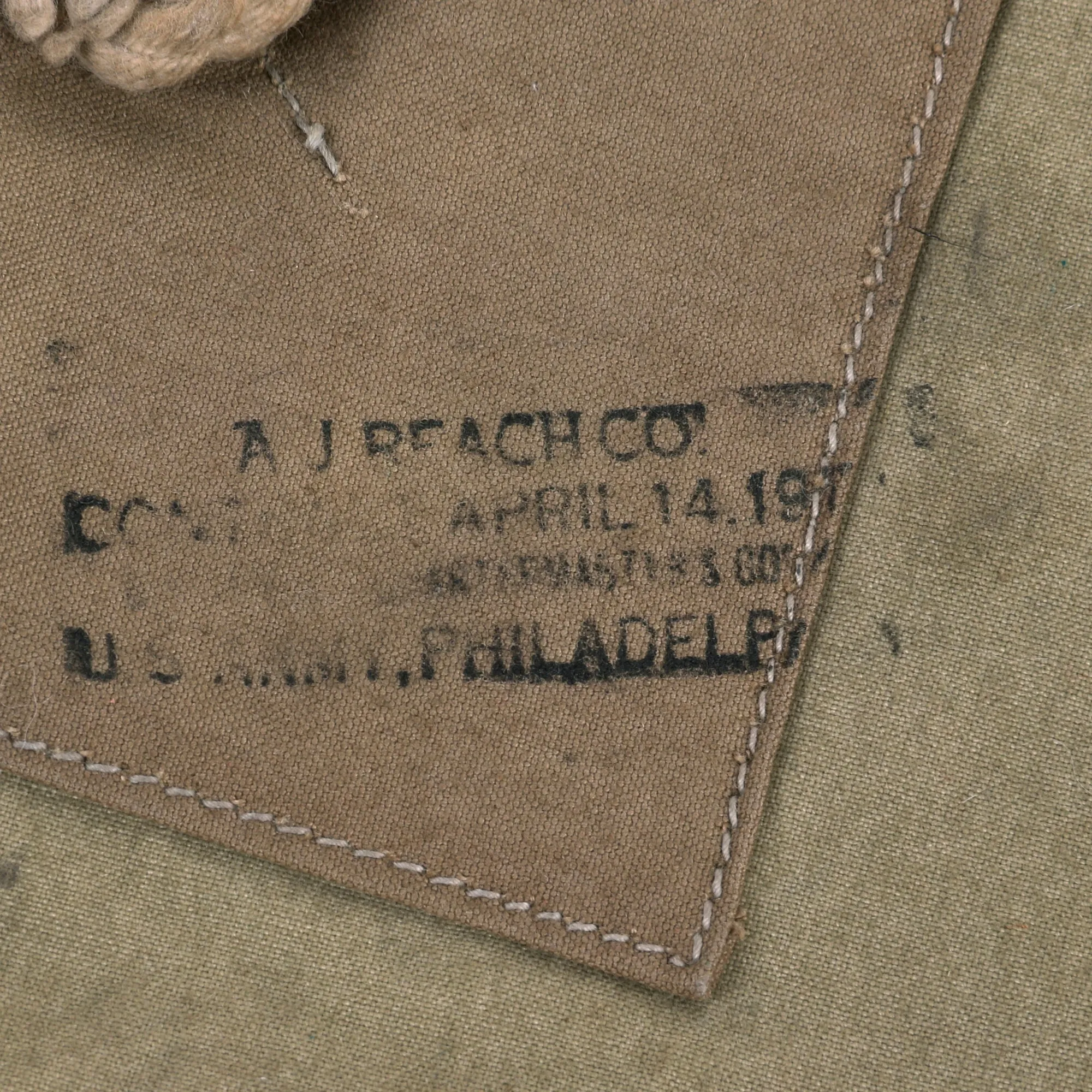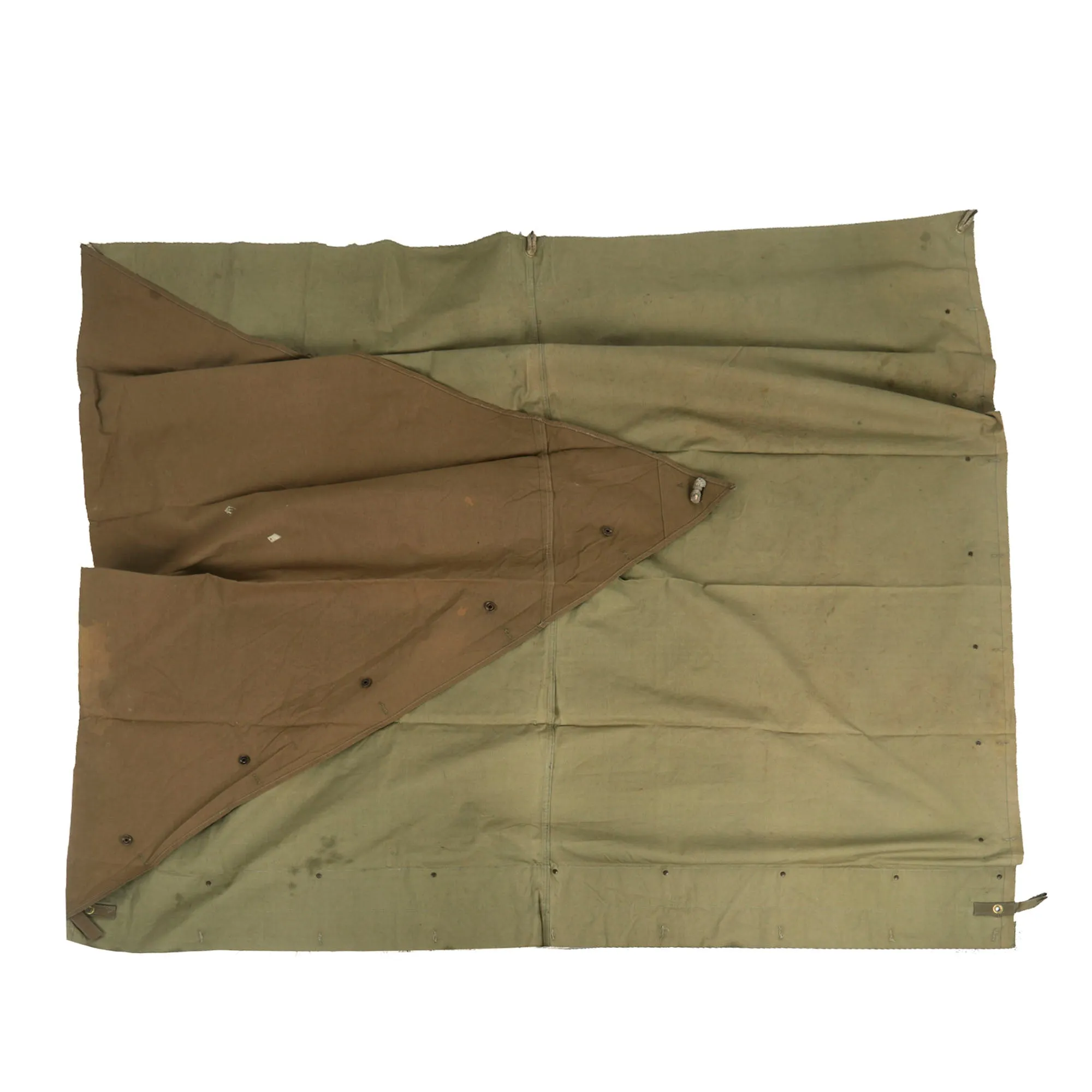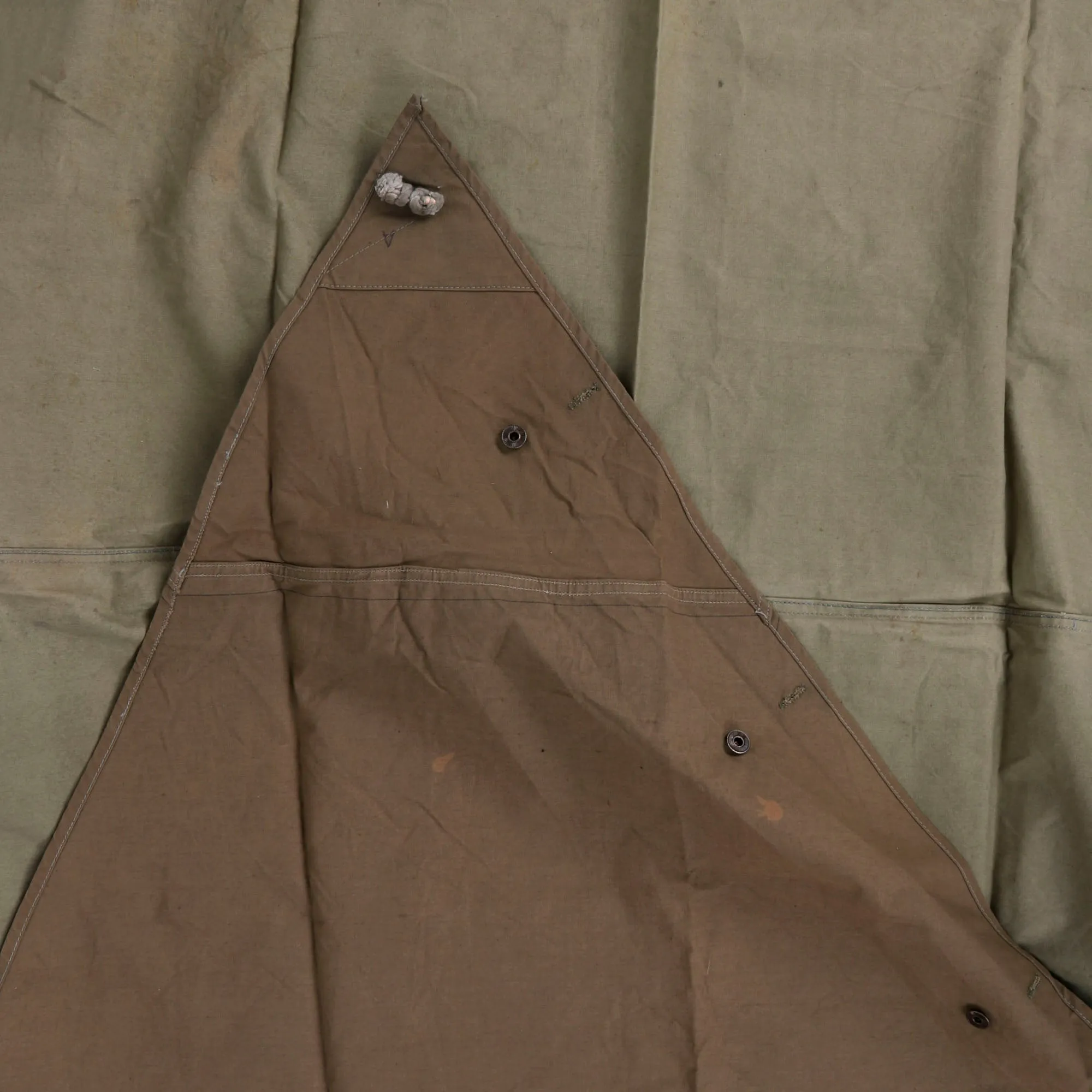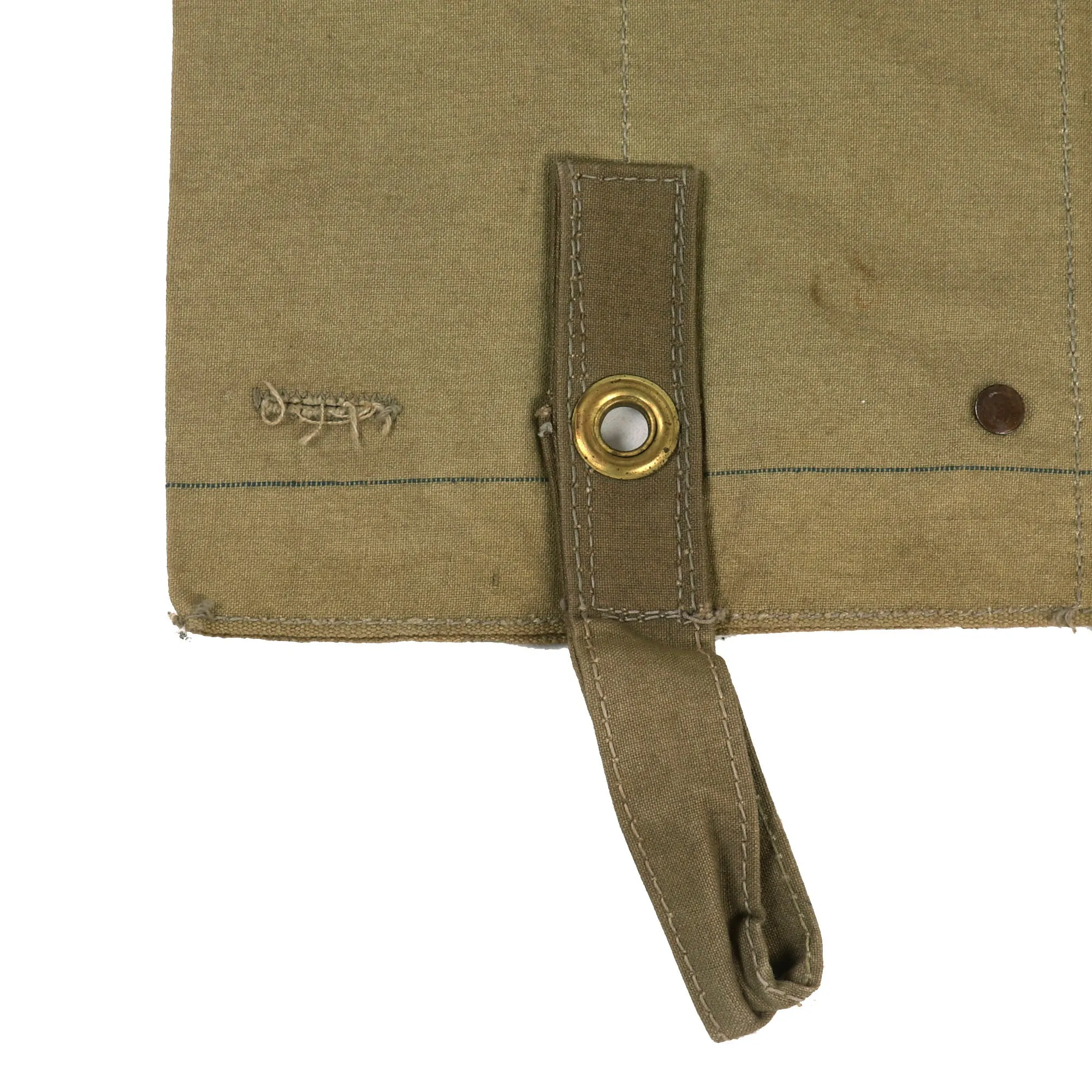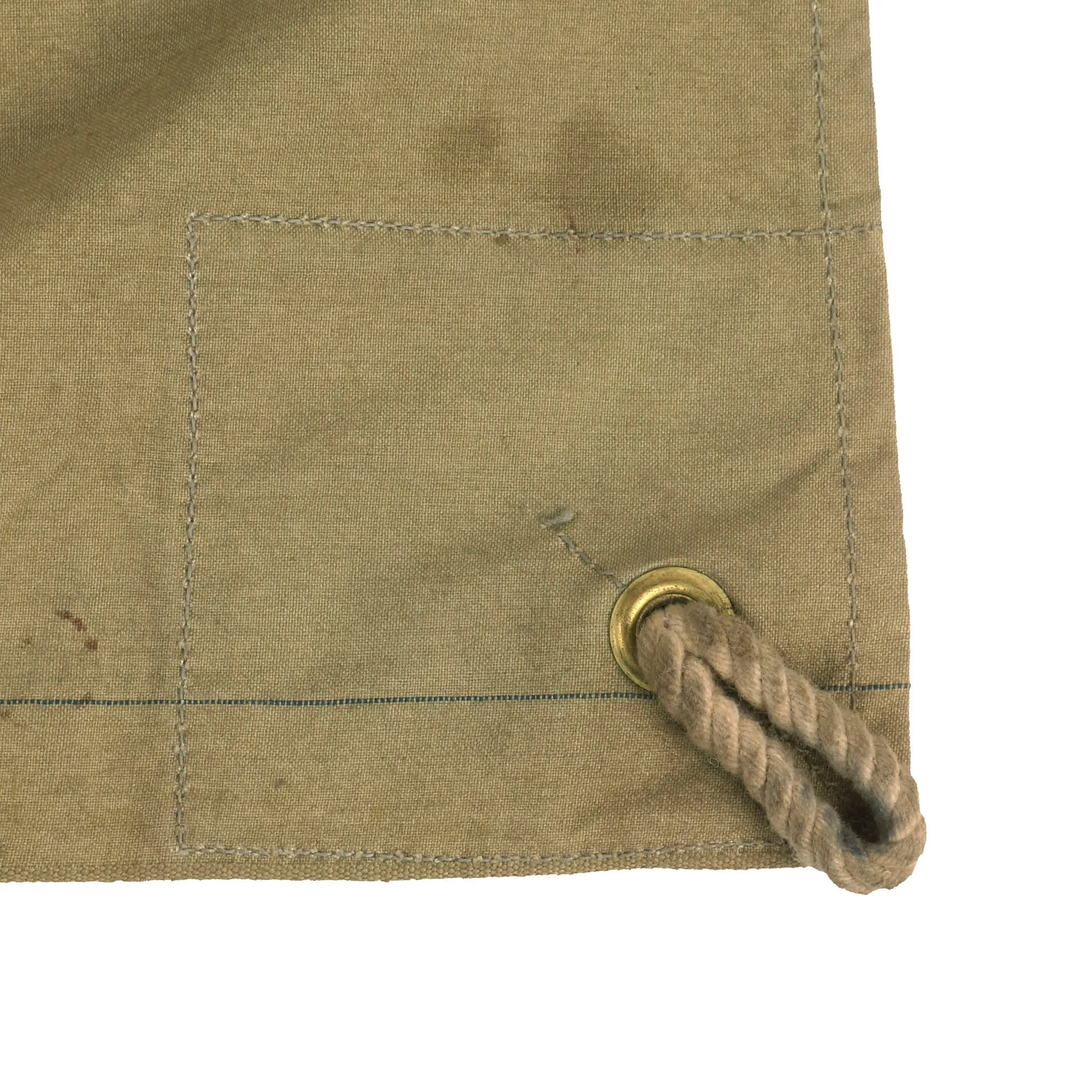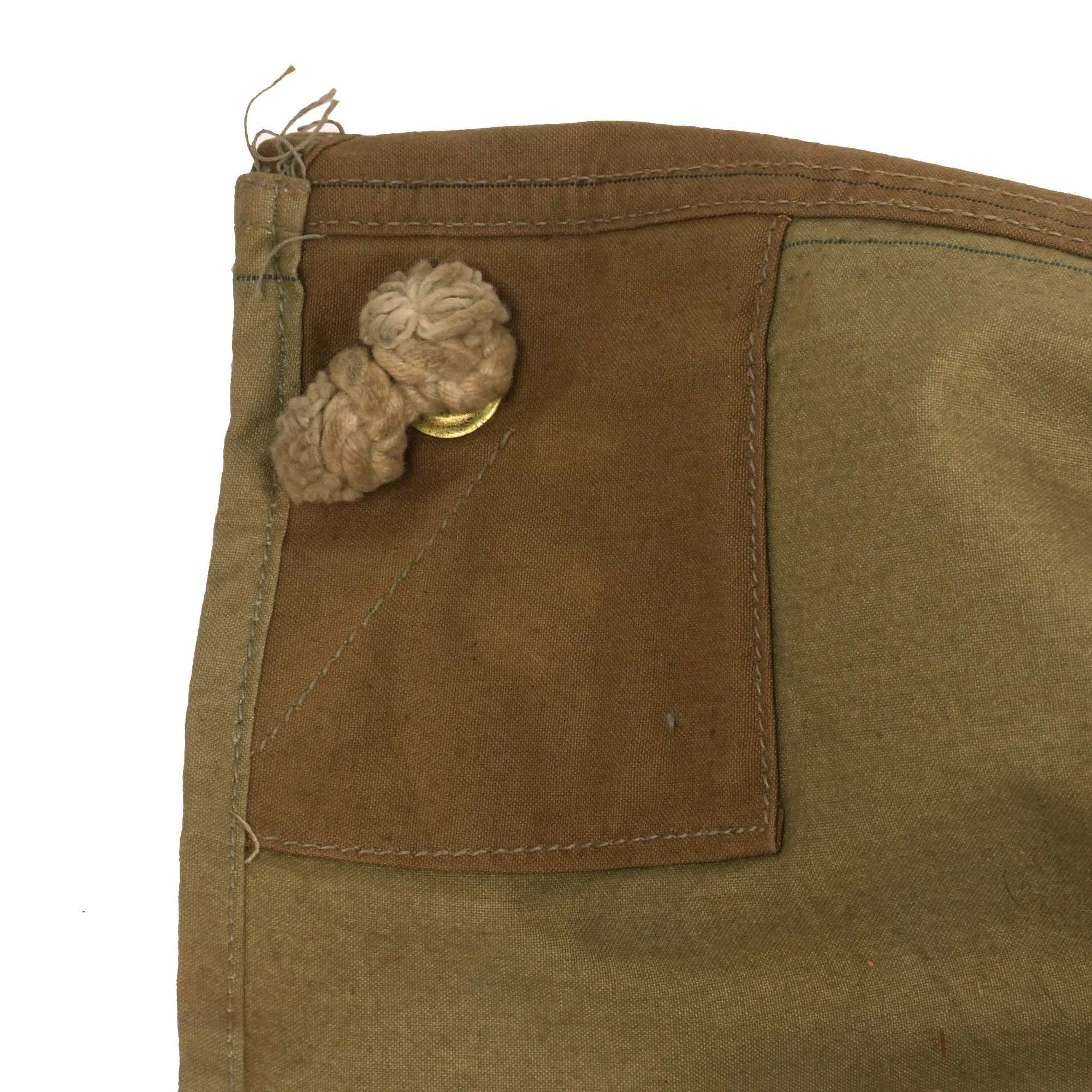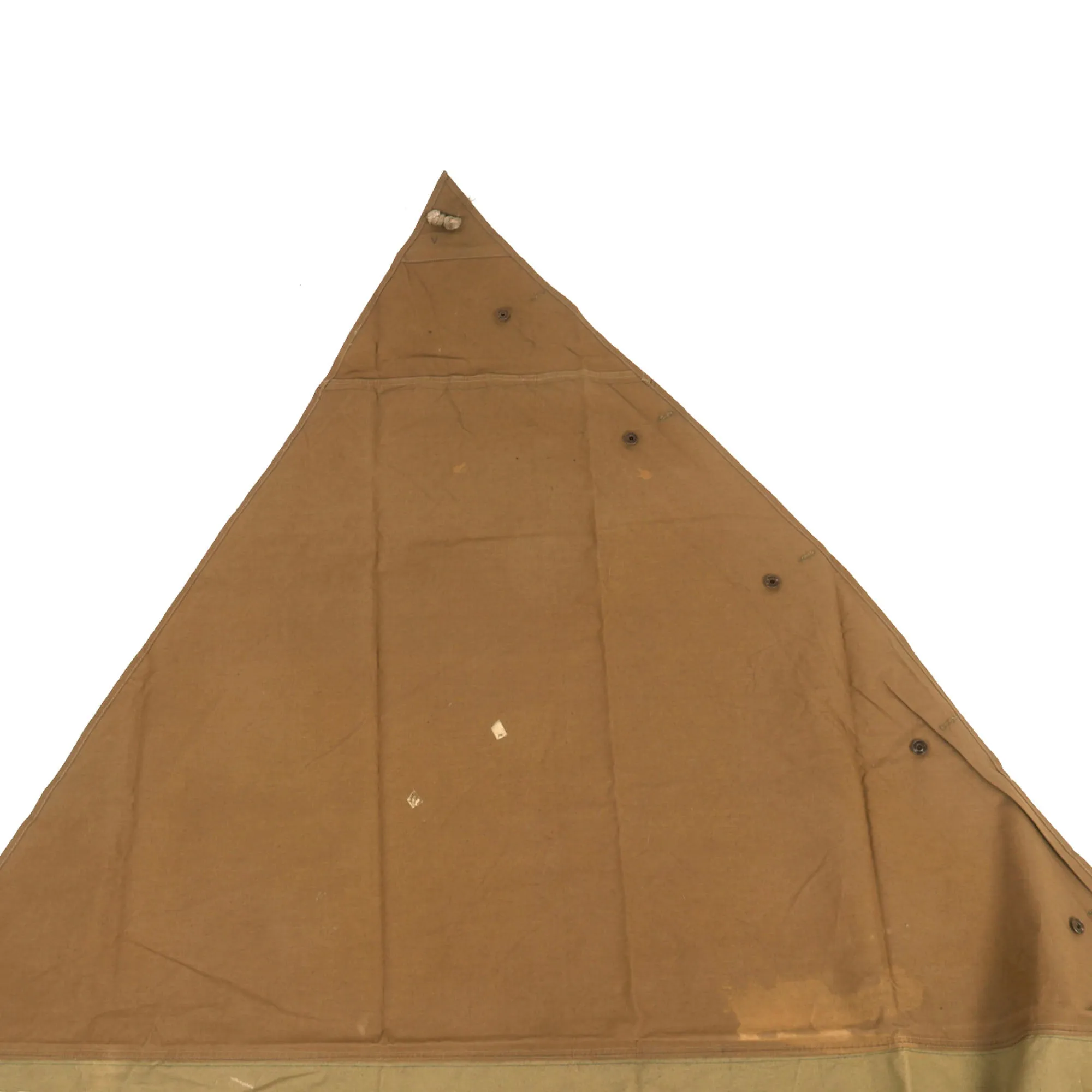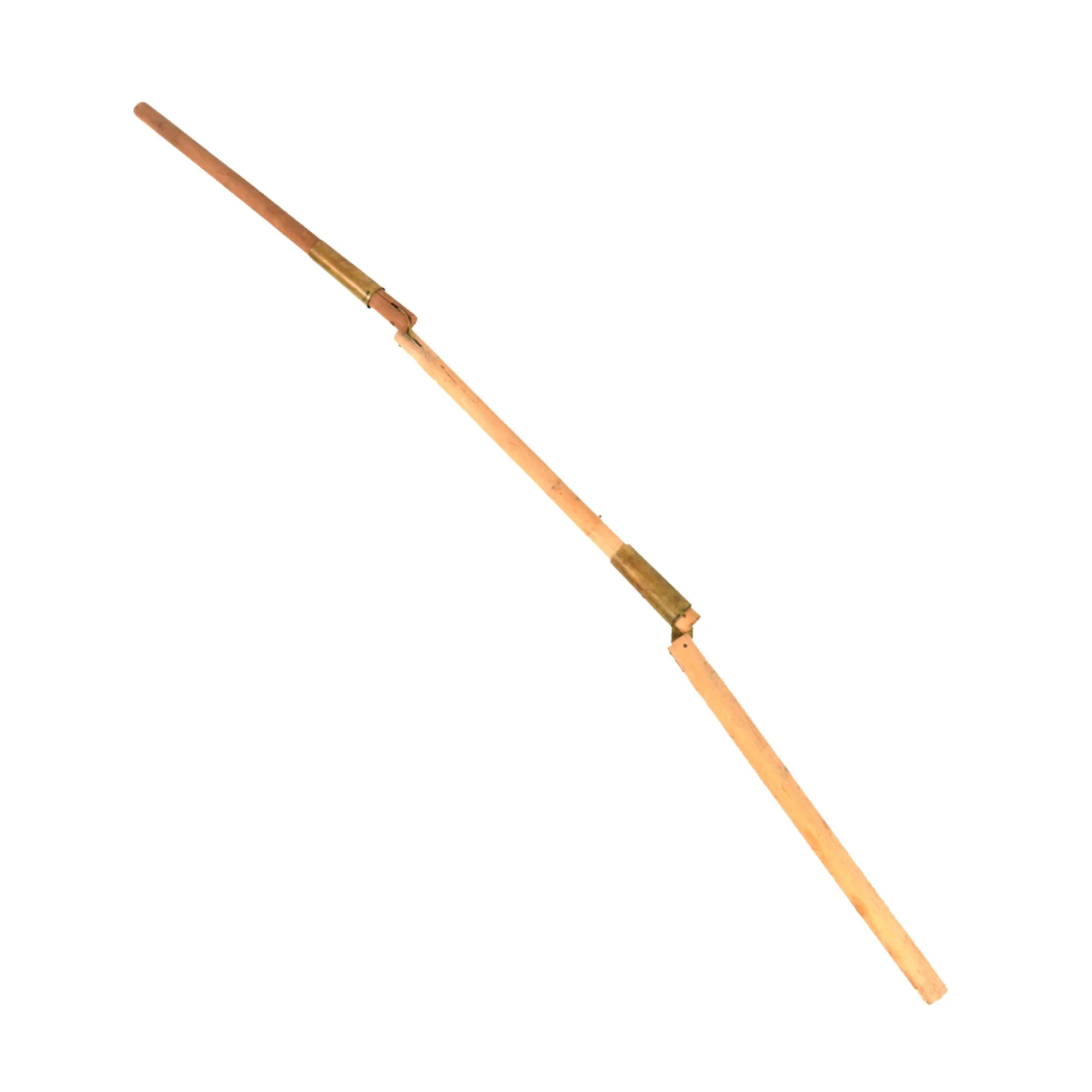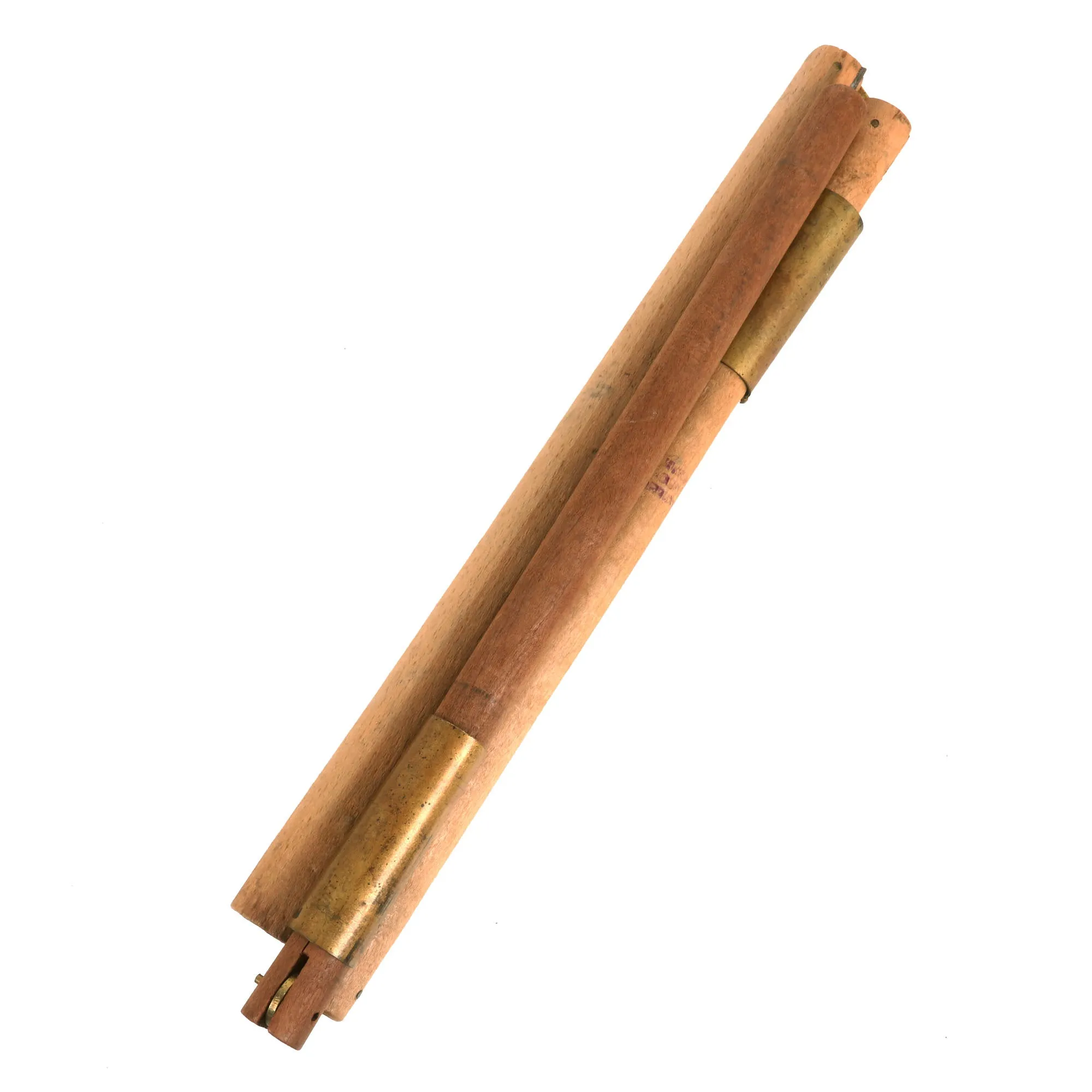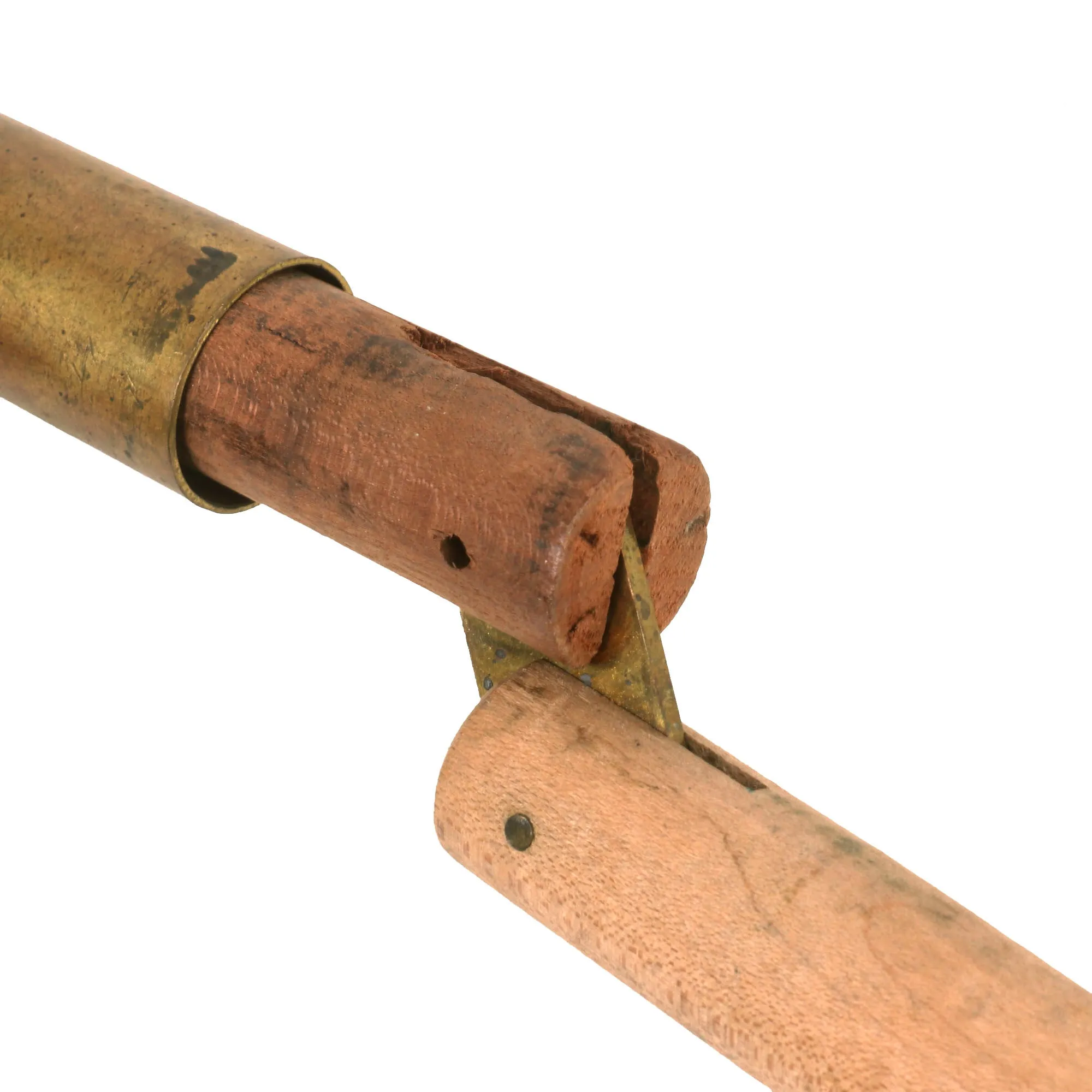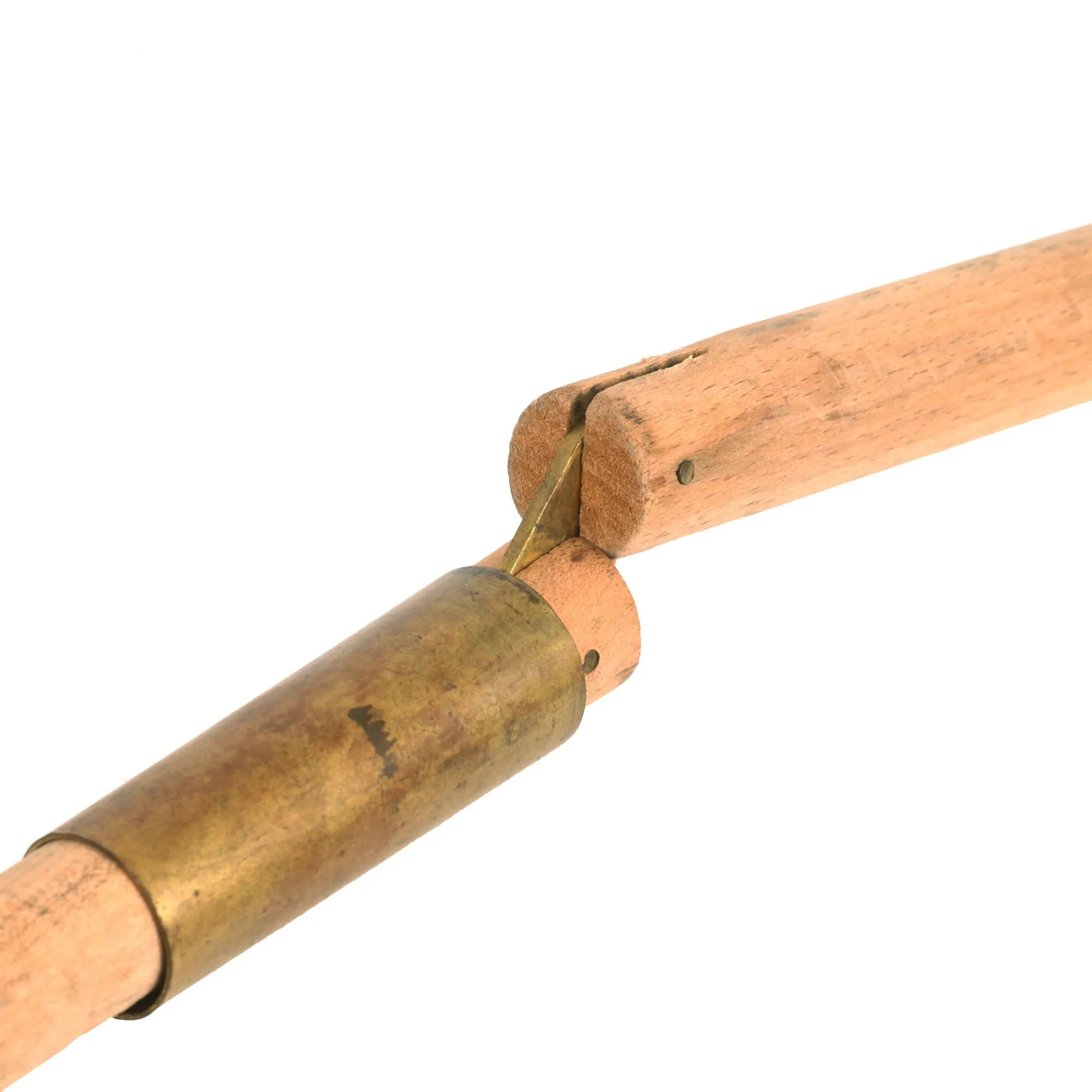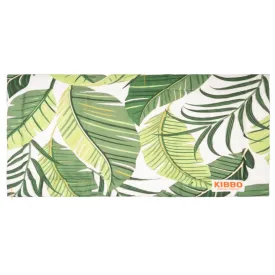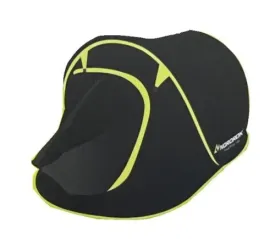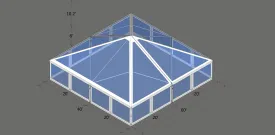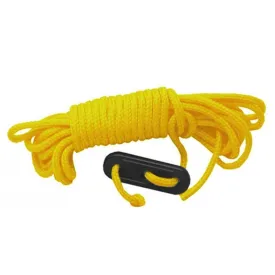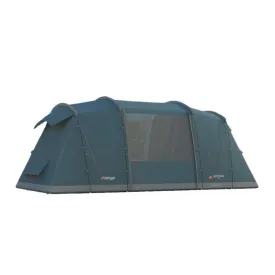Original Item. Only One Available. In 1910 the US Army Infantry and Cavalry adopted separate designs for a new shelter half. The Cavalry opted for this one, the same basic style that had been in use since 1892, while the Infantry adopted a much smaller shelter half designed to use a rifle in the front and a bayonet in the back in lieu of poles. Experience gained during the Punitive Expedition convinced the Army to standardize on the Cavalry pattern shelter half in 1917.
This is a fantastic unissued WWI shelter half complete with its original matching early collapsible tent pole and its five tent pegs, all in great functional condition. The canvas is in good shape and would be great for an AEF display. These are difficult to find in this well-preserved of condition with all its original pieces. Comes ready for further research and display.
Forming a roll around the field pack this shelter half was an essential part of a Marine's field equipment!
A shelter-half is a simple kind of partial tent designed to provide temporary shelter and concealment when combined with one or more sections. Two sheets of canvas or a similar material (the halves) are fastened together with snaps, straps or buttons to form a larger surface. The shelter-half is then erected using poles, ropes, pegs, and whatever tools are on hand, forming an inverted V structure. Small tents like these are often called pup tents in American English.
Shelter halves are a mainstay of most armies, and are known from the mid 19th century. Often, each soldier carries one shelter-half and half the poles, etc., and they pair off to erect a two-man tent. The size and shape of each half shelter piece may vary from army to army, but are typically rectangular, triangular or lozenge shaped. When time and space allow, some forms of half-shelters can be combined into a larger, more complex tent.
Shelter-halves are usually designed to serve double duty as ponchos against the rain, or for the concealment of snipers. While the fabric is often simple olive drab, several nations use camouflage fabric. The first printed camouflage for soldiers was the Italian Telo mimetico introduced in 1929 for their half-shelters. The first camouflage uniforms were the Second World War German paratrooper smock, based on their M1931 Splittermuster shelter-halves. Russian Army has used Plasch-palatkas (literally "cape-tents", designed to be used as both a part of a larger tent cover, or an individual weatherproof cape) since 1894, and the modern version, virtually unchanged since, was introduced in 1936, with the camo version being available since 1942. To add some confusion, the ordinary waterproofed cape with a similar name (plasch-nakidka, "cape-overcoat") was issued at the same time, but these weren't intended to combine with each other.




